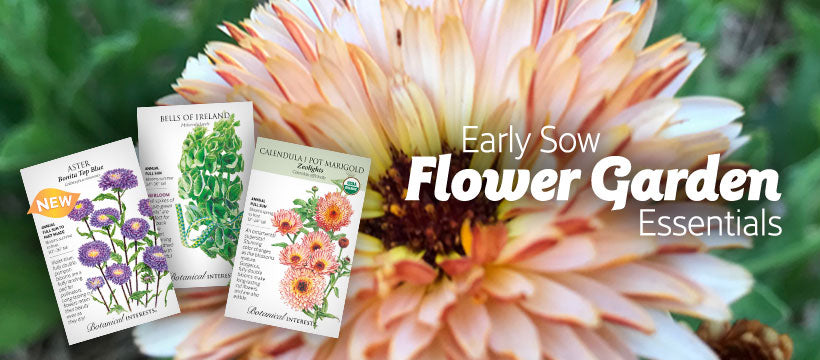What's not to love about calendula (Calendula officinalis)? This easy-to-grow annual, also called pot marigold, contributes so many benefits that we made two lists!

Health Benefits
- Calendula tea is known to reduce inflammation and provide beneficial antioxidants (however, it can cause sleepiness and is to be avoided with other sleep aids or depressants).
- Topically, calendula has antibacterial, antiviral, anti-inflammatory, anti-tumor, and antioxidant properties. (Always consult a doctor before adding medicinal herbs to your diet.)
- Calendula is edible, and the pretty petals can be used to decorate salads or baked goods, or it can act as a natural food dye (or fabric dye!).
Garden Benefits
- Blooms prolifically in cool weather.
- They're so beautiful with a range of colors from warm orange to yellow or pink and may even have other colors on the underside of the petals.
- With its long bloom season, calendula makes a great cutting flower.
- It's quite cold hardy, even blooming through some of the first snows!
- In the garden, it can be used to draw in beneficial insects, like those that prey on pests, or pollinators to boost your garden production.
- Calendula can also be used as a trap crop to lure aphids, whiteflies, or thrips away from other plants in the garden, such as vulnerable vegetables.

Calendula oil
One of the ways to utilize calendula's health properties is to make calendula oil, which can then be used topically to clean and firm skin, remove make-up, or treat skin irritations like sunburn, acne, stings, burns, eczema, diaper rash, razor burn, and more. If you use an edible oil for your infusion you can also use your calendula oil in cooking, for salad dressing, or other culinary creations. The finished calendula oil can also be used to create other products like lotions or salves.
Harvest and dry calendula flowers
Snip whole flowers off just under the round green bracts (base) at the bottom of the flower. There is a concentration of the beneficial resins in the green base of the flowers so it is important to include that portion. Air-dry flowers in a single layer indoors for 1 to 2 weeks. If flowers are not completely dried, the moisture in the flowers can cause bacterial growth that makes the oil go bad.

Choose your carrier oil
If you will be using this oil on your skin, choose a non-comedogenic oil which won't clog pores. If you choose an edible oil, you can also use the oil for cooking. There are several good, non-comedogenic options available and we will list a few here:
- Extra-virgin olive oil
- Grapeseed oil
- Safflower oil
- Sunflower oil with low oleic content
- Jojoba oil
- Hemp oil
- Argan oil
- Sweet almond oil

Infuse your oil
Place the dried flowers in a clean glass jar and pour the oil over the flowers to just cover them. A spoon or chop stick may be helpful to push down any flowers that float above the oil. Put a lid on the jar, and place in a sunny window for 1 to 2 months.
Filter and store the oil
After at least 1 month, filter the oil using cheesecloth, a fine-mesh sieve, or other filter that will trap the flower bits but allow the oil to flow through. Store your oil in a dark container, or out of direct sunlight, or in the refrigerator to preserve shelf life.
Voilà! You just made your own calendula oil! What are your plans for your homegrown and handmade-with-love oil? Perhaps it's a gift or a treasure for yourself? Tell us in the comments below.

